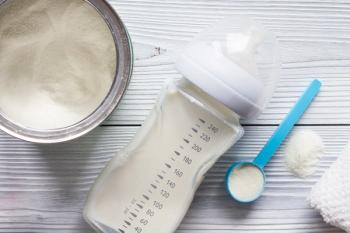
New Cheerleading Injury Prevention Guidelines from Pediatricians Group
New cheerleading injury prevention guidelines from the American Academy of Pediatrics are meant to stem rising tide of catastrophic injuries.
Cheerleading coaches, parents, and school officials are urged to follow injury prevention guidelines, develop emergency plans, and ensure that programs have access to the same level of qualified coaches, medical care, and injury surveillance as other sports in a new policy statement issued by the American Academy of Pediatrics (AAP). The organization released the statement, “Cheerleading Injuries: Epidemiology and Recommendations for Prevention,” at the AAP National Conference & Exhibition in New Orleans.
Cheerleading has evolved into a competitive, year-round sport that features complex acrobatic stunts performed by a growing number of athletes, and the number and severity of injuries has surged accordingly, the AAP noted. There have been 26,000 cheerleading injuries in the United States each year since 2007, and cheerleading accounts for 66% of catastrophic injuries in high school female athletes over the past 25 years. The injury rate is low compared with those of other sports, but the number of catastrophic injuries continues to increase. Most injuries are sprains and strains to the lower extremities, followed by head and neck injuries. Cheerleading is one of the highest-risk sporting events for direct catastrophic injuries that can result in permanent brain injury, paralysis, or death.
Only 29 state high school athletic associations recognize cheerleading as a sport, and the National Collegiate Athletic Association does not include competitive cheerleading in its list of sponsored sports, the AAP said, noting that classification as a sport provides athletes with increased protection.
Risk factors for cheerleading injuries include previous injury, cheering on hard surfaces, higher body mass index, performing complicated stunts, and inadequate coaching. Cheerleading injury rates increase with competition level and age. The rate of injury is higher in collegiate cheerleaders than in middle and high school competitors.
AAP recommendations for cheerleading injury prevention include the following:
• Cheerleading should be designated as a sport in all states, allowing for more qualified coaches, better access to medical care, and improved injury surveillance.
• All cheerleaders should have a preseason physical examination and access to qualified strength and conditioning coaches.
• Cheerleaders should be trained in all spotting techniques and attempt stunts only after they demonstrate appropriate skill progression.
• Pyramid and partner stunts should be performed only on a spring/foam floor or on grass/turf rather than on hard, wet, or uneven surfaces. Pyramids should not be more than 2 persons high.
• Coaches, parents, and athletes should have access to a written emergency plan.
• Any cheerleader in whom a head injury is suspected should be removed from practice or competition and not allowed to return until he or she has clearance from a health professional.
For more information, visit the AAP Web site at
Newsletter
Access practical, evidence-based guidance to support better care for our youngest patients. Join our email list for the latest clinical updates.








